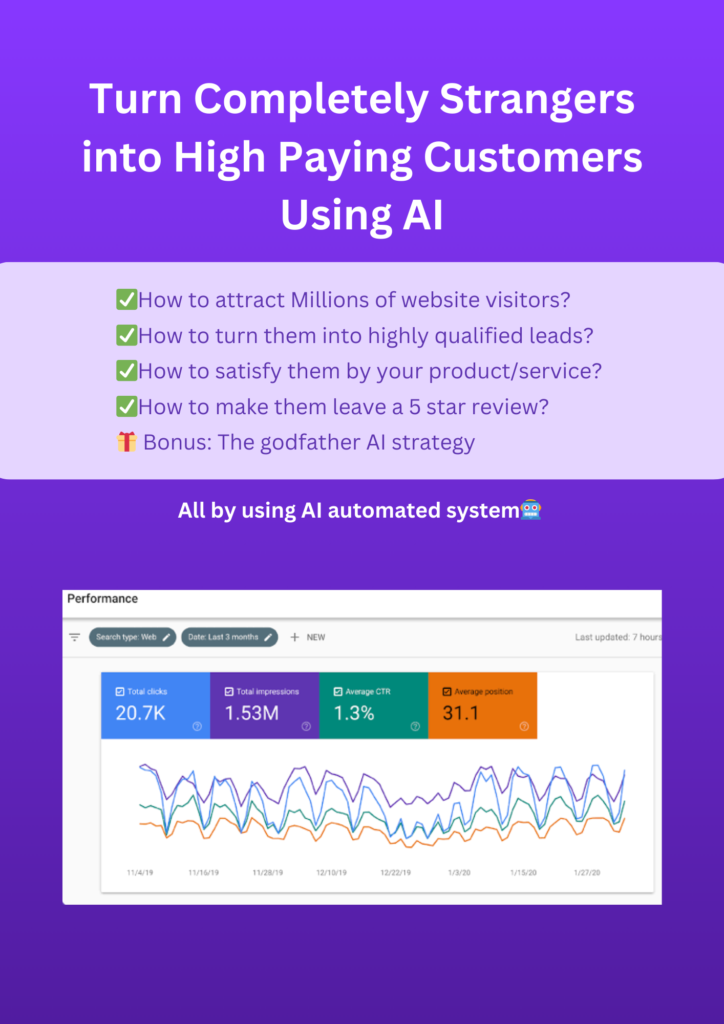What is Predictive Analytics?
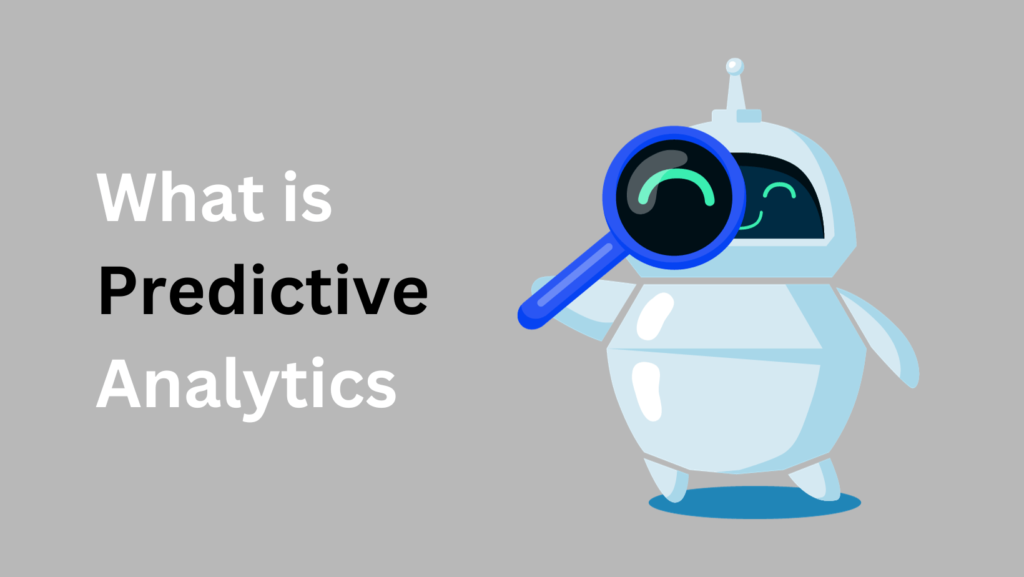
Predictive analytics is like when you try to guess what your best friend might want for their birthday.
You remember what they liked before and use that to make a smart guess.
Well, businesses and smart grown-ups use something similar, but with numbers and computers.
They look at a lot of old information to guess what might happen in the future.
So, just like you guess what your friend wants for their birthday, predictive analytics guesses what might happen next in things like stores or big companies.
This helps companies and organizations make smart choices, improve their plans, and stay ahead of problems.
Whether it’s in finance, where it predicts how markets will move, or in healthcare, where it forecasts patient outcomes, or even in retail, where it guesses what customers might buy next, predictive analytics is like a superpower that helps businesses and groups stay on top of things in our data-driven world.
35% Increase in Amazon sales by using Predictive Analytics effectively
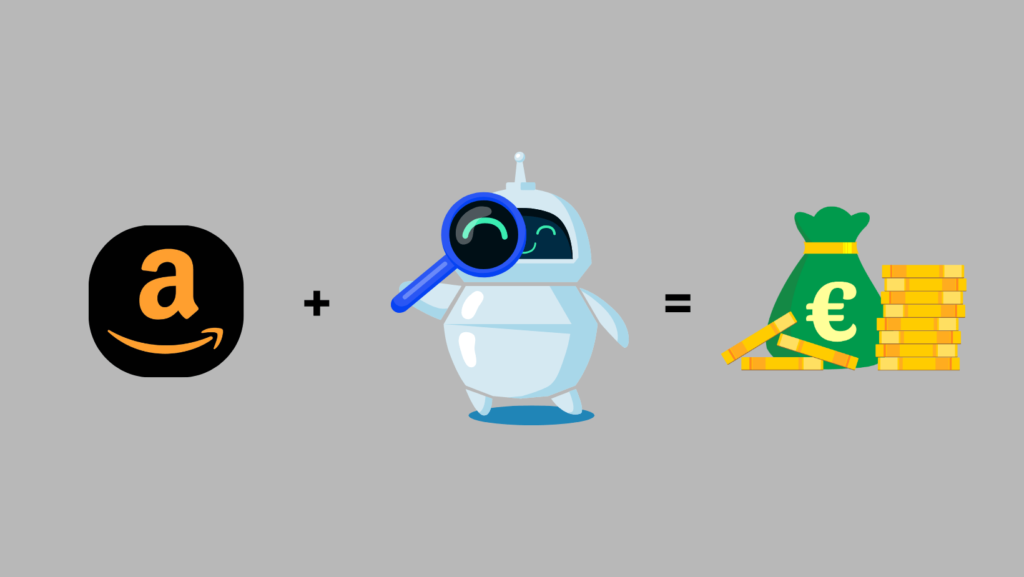
You know, Amazon has really nailed the art of boosting their revenue, and it’s all thanks to predictive analytics.
They’ve actually seen their earnings shoot up by a whopping 35%, and here’s how they do it: They’re mind-readers when it comes to their customers.
Well, the question here is How Amazon uses artificial intelligence?
They look at what you’ve bought before and what you’ve been checking out, and then they use that info to suggest products you’re likely to love.
You’ve probably seen those “Customers who bought this also bought…” recommendations, right?
That’s the magic of predictive analytics.
It’s a gentle nudge, encouraging you to add more goodies to your shopping cart, and that adds up.
But it doesn’t stop there.
Amazon’s also got these smart algorithms that help them keep just the right amount of stuff in stock and price it just right.
So, they not only know what you might want but also make sure it’s there when you want it and at a price that’s hard to resist.
It’s a brilliant strategy that proves how predictive analytics can supercharge a business’s revenue.
How does Predictive Analytics work?
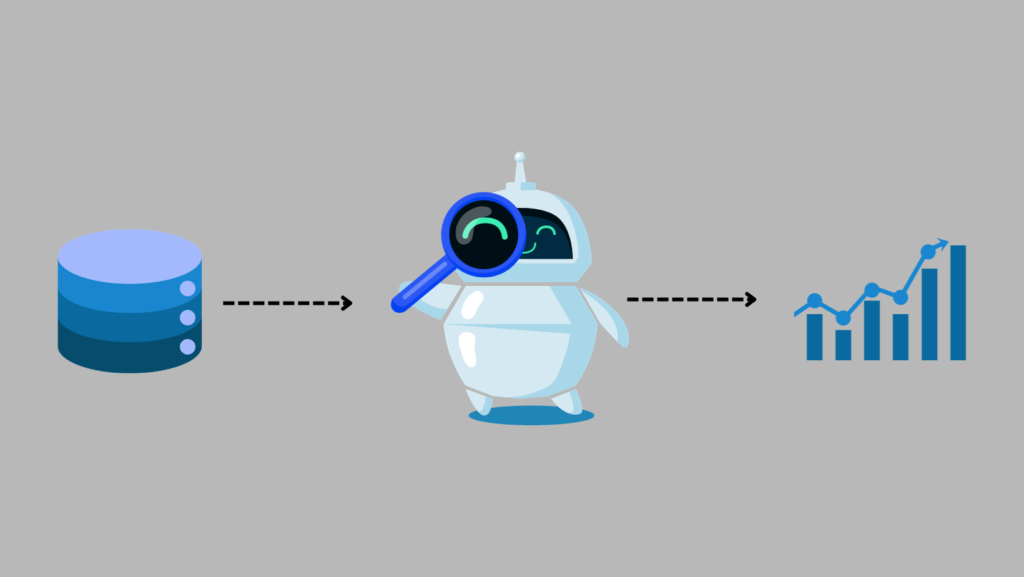
So, let’s break down predictive analytics in a simpler way.
It’s like having a crystal ball, but instead of magic, it relies on data and math to predict the future.
First, we gather and look closely at past data, kind of like studying history.
This data helps us learn important stuff.
Then, we use really smart math and computer tricks, often using machines to help, to find connections and patterns in that data.
These machines use data analysis techniques to make those smart guesses.
Imagine it like connecting the dots or finding hidden clues.
We teach these math models by showing them the past data so they can learn from it, just like how we learn from our mistakes.
Once these models are good at learning, we can use them to guess what might happen in the future based on new information.
But here’s the cool part: we keep teaching these models with new data, so they get even better at predicting things as time goes on.
So, in a nutshell, predictive analytics is about using the past to make smart guesses about what’s coming up in the future.
How to Use Predictive Analytics in business? Step- by-Step guide!
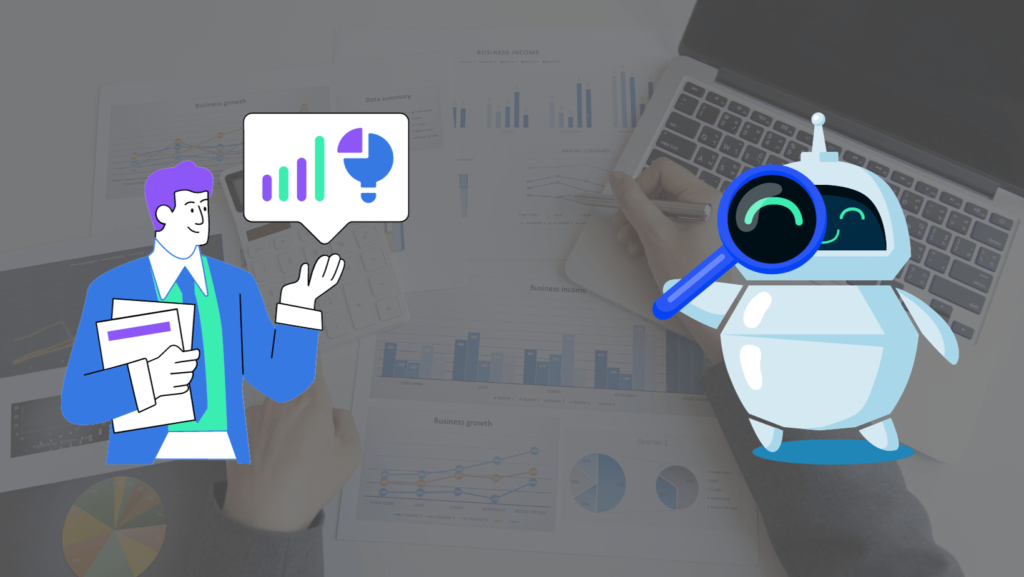
Think of predictive analytics like going on a treasure hunt to uncover answers to big questions that businesses have. Here’s a more detailed look at how it all works:
Step 1: Define Your Objective
Imagine you’re a treasure hunter, and you want to find a hidden treasure chest. That’s your big goal. In the business world, this could be something like, “How can we sell more ice cream?”
Step 2: Gather Data
To find the treasure, you collect lots of clues or pieces of information. These clues could include things like which ice cream flavors people like the most, where they usually buy ice cream, and when they buy it.
Step 3: Clean and Prepare Data
Now, these clues can be a bit messy. You might find the same clue twice or some missing pieces. So, just like cleaning your room before a treasure hunt, you clean up the clues.
Step 4: Choose the Right Tools and Software
For your treasure hunt, you need special tools, like a magnifying glass, to help you see details in the clues. In the business world, these tools are like computer programs specially designed for this job.
Step 5: Feature Engineering
You’re not done yet! You also create new clues from the old ones. For example, you might figure out which ice cream flavors are super popular or where most people buy ice cream.
Step 6: Select a Predictive Model
Now it’s time to choose the right way to find the answer. It’s like picking the right map for your treasure hunt. In predictive analytics, you select the best method to help you make sense of all the clues.
Step 7: Train the Model
Your map, or model, needs training. You show it all the clues you’ve gathered, and it learns from them. It’s like teaching a puppy new tricks, but instead of tricks, it learns how to find answers.
Step 8: Validate and Evaluate
You need to check if your map (or model) is good at finding answers. You test it with more clues to see if it’s really good at the treasure hunt. You want it to be super accurate.
Step 9: Fine-Tune the Model
If your map isn’t the best at finding answers, you can make it better. It’s like adjusting the lens on your magnifying glass to see things more clearly.
Step 10: Deploy the Model
When your map (or model) is amazing at finding answers, you put it to work. In the business world, this means using it to sell more ice cream, for example.
Step 11: Monitor and Maintain
Your map needs to stay sharp. You update it with new clues now and then because things change. In the business world, you keep feeding it new information to make sure it stays accurate.
Step 12: Make Informed Decisions
Finally, you use the answers your map (or model) finds to make smart decisions. This could be selling the right ice cream flavors at the right times. And that’s how predictive analytics helps solve important puzzles in the business world, just like finding hidden treasure!
Benefits - Why is it important to use Predictive Analytics in Business?
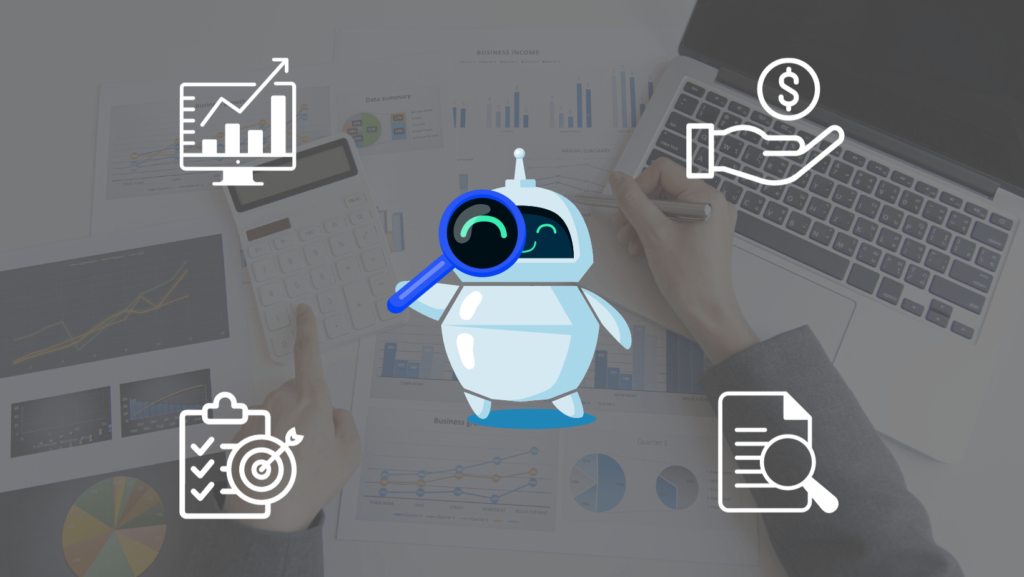
Smarter Choices: Predictive analytics gives you a sneak peek into the future. It helps you understand what’s likely to happen so you can plan and make better decisions.
Efficiency Boost: It’s like a secret weapon for efficiency. You can optimize everything – from how much stuff to keep in stock to where to put your marketing dollars. That means saving money and working smarter.
Happy Customers: Predictive analytics lets you get personal with your customers. By knowing what they like and how they behave, you can offer products and services that they’ll love. You can increase your customer retention rate and make them happy. Happy customers mean more loyalty.
Staying Ahead: It’s your competitive edge. You’ll always be one step ahead of the game, spotting trends early and jumping on opportunities before others even see them.
Risk Control: Predictive analytics helps you spot trouble before it hits. Whether it’s catching fraud, assessing credit risks, or handling supply chain hiccups, you can act before things go south.
Marketing Magic: You’ll be like a magician in marketing. By understanding your customers and predicting what they’ll do, your marketing campaigns hit the bullseye more often, making your business grow.
More Money: Think of it as a money-making tool. By forecasting sales and revenues accurately, you can focus on what’s going to bring in the big bucks.
Resource Wizardry: It’s like having a wizard’s wand for resource management. You can allocate your people, time, and materials wisely, squeezing every drop of profit.
Always Getting Better: Predictive models keep learning. You can update them with new data, so you’re always adapting to change and getting better at what you do.
Keeping Your VIPs: By predicting which customers might leave, you can do things to keep them happy and stick around. That means you spend less trying to find new customers.
Limitations of Predictive Analytics
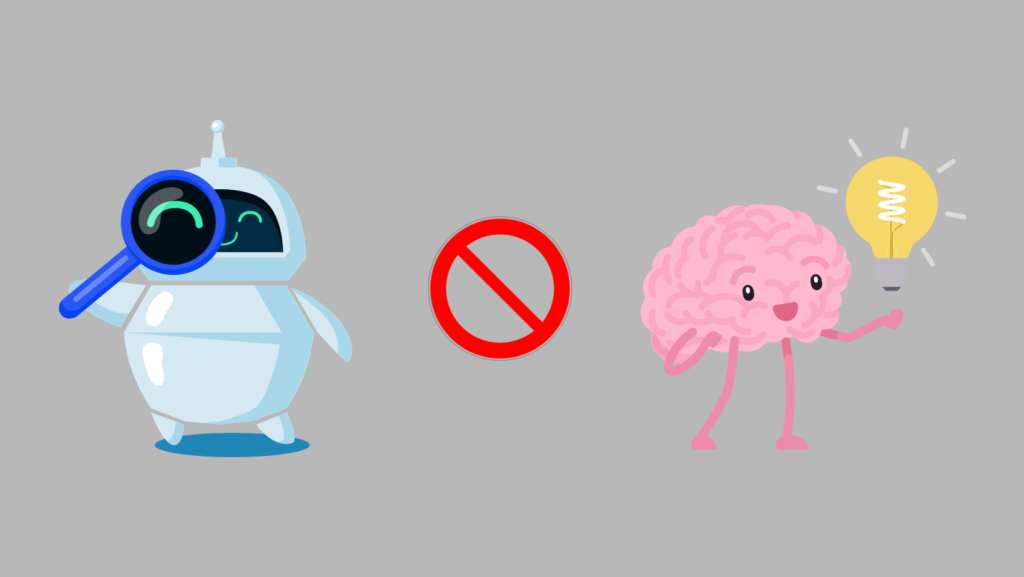
Predict the Unpredictable: It may sound obvious, but predictive analytics can’t foresee truly unpredictable events, like natural disasters or sudden market crashes. It deals with patterns and data, not random chaos.
Mind Reading: While it’s great at analyzing data, predictive analytics can’t read people’s minds. It can’t tell you why customers make certain choices; it can only make educated guesses based on data.
Replace Human Judgment: It’s a tool, not a replacement for human decision-making. Sometimes, gut feelings, experience, and creativity are still essential in making the best decisions.
100% Accuracy: This is also one of the challenges in predictive analytics. Predictive analytics isn’t infallible. It’s based on probabilities and past data, so there’s always a margin of error. It might not always get it right.
Short-Term Focus: It’s better at short-term predictions than long-term ones. Predicting what will happen years down the line is much trickier.
Ethical Considerations: It can’t navigate ethical dilemmas on its own. Decisions about fairness, privacy, and bias require human guidance and moral judgment.
Fix Everything Instantly: If you find a problem using predictive analytics, it doesn’t mean you can fix it right away. You still need to come up with solutions and implement them.
Data Dependency: Predictive analytics relies heavily on good quality data. If your data is incomplete, inaccurate, or biased, your predictions will be too.
Complex Causality: It’s not great at uncovering complex cause-and-effect relationships. It can show correlations, but it might not explain why those correlations exist.
No Crystal Ball: Despite its name, predictive analytics can’t see the future with certainty. It’s more like looking at a weather forecast; it gives you a good idea, but you still might need an umbrella.
Examples of companies that are using Predictive Analytics in 2023.
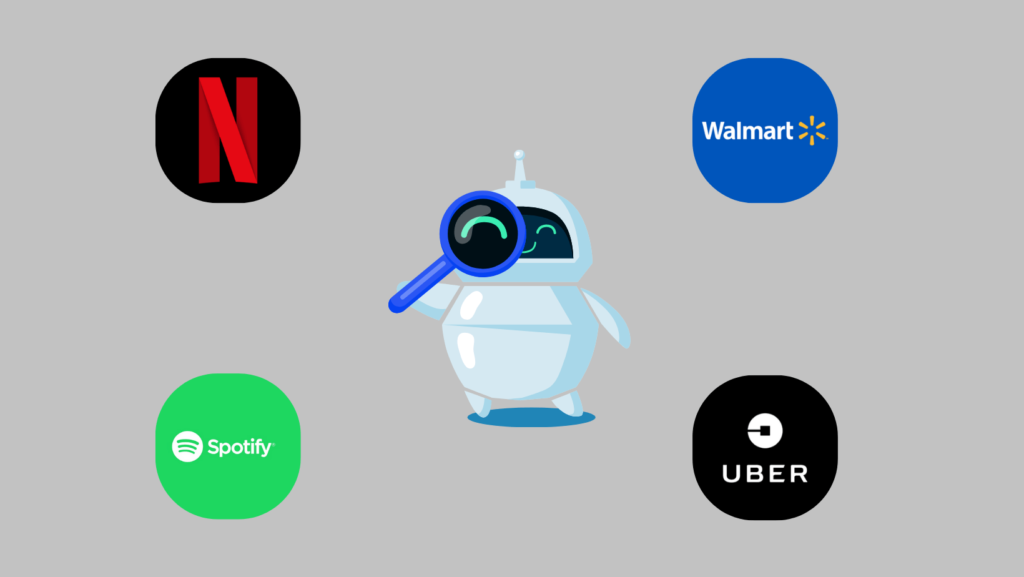
Netflix: Ever wonder how Netflix knows what shows to recommend? They use predictive analytics to analyze what you’ve watched and what you might enjoy next. It keeps us glued to our screens!
Uber: Uber is really clever with predictive analytics. They figure out where and when people will need rides, so they can send drivers to the right places and even adjust prices based on demand. It’s all about making the service work smoother.
Spotify: If you use Spotify, you’ve probably noticed those awesome playlists they create for you. They use predictive analytics to look at your music taste and make playlists you’ll love, keeping you hooked on their platform.
Ford: In the car world, Ford uses predictive analytics to predict when a car part might break down. This means they can fix things before they go wrong, which is a big win for car owners.
Walmart: Walmart uses predictive analytics to manage their stock. They look at past sales and even things like the weather to make sure they have just the right amount of stuff on the shelves. It’s all about saving money and avoiding empty shelves.
Delta Airlines: Delta uses predictive analytics to keep their planes in top shape. They analyze data from sensors and past maintenance records to predict when parts might need replacing. It’s all about safer and smoother flights.
Tools for using Predictive analytics in your business.
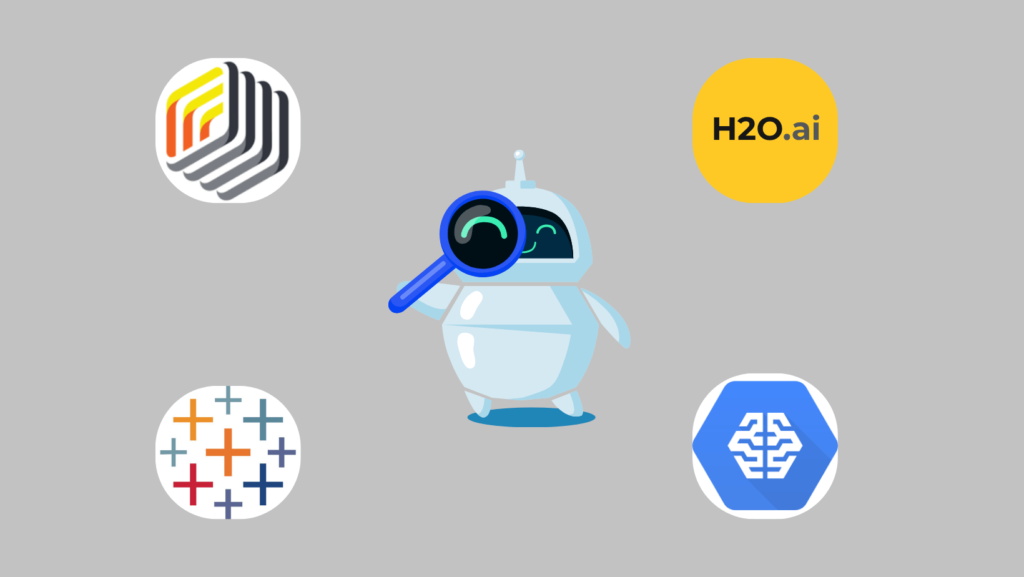
RapidMiner: RapidMiner is an open-source data science platform that provides a visual environment for building predictive models.
KNIME: KNIME is an open-source platform for data analytics, reporting, and integration. It offers a wide range of extensions for predictive analytics.
Microsoft Azure Machine Learning: Azure ML is a cloud-based platform that simplifies the process of building, training, and deploying predictive models. It’s integrated with other Microsoft services.
Google Cloud AI Platform: Google’s AI Platform offers tools for building and deploying machine learning models, including predictive analytics applications.
H2O.ai: H2O is an open-source platform for machine learning and predictive analytics. It provides libraries and tools for building predictive models.
Tableau: Tableau is a data visualization tool that also offers predictive analytics capabilities through integrations with other tools and languages like Python and R.
What is the future of Predictive analytics in business?
The future of predictive analytics in business looks pretty exciting.
With technology getting fancier by the day, predictive analytics is getting super smart.
It’s going to help organizations use big data to make super accurate decisions. You know what’s cool?
Machine learning and AI are going to be big players here.
They won’t just predict stuff; they’ll even make decisions for us.
Plus, they’re going to make things clear with something called “Explainable AI” so we can trust these predictions.
And here’s the kicker: IoT data and real-time analytics are going to help companies stay on top of the game, changing their moves almost instantly based on what’s happening out there.
Of course, we can’t forget about being ethical and keeping data safe.
That’s going to be more important than ever.
So yeah, the future of predictive analytics is like a makeover for businesses, making them super innovative, efficient, and successful!
Conclusion
Let’s sum it up. Predictive analytics is like a super-smart tool for businesses.
It’s a bit like guessing what your friend wants for their birthday, but with data and computers.
Companies like Amazon and Netflix use it to make more money and keep customers happy.
Here’s how it works: You collect a bunch of data, clean it up, and then use special tools and math to find patterns.
It’s like finding hidden clues. You teach these tools with the data, and they get better at guessing what might happen next.
But remember, it’s not perfect. It can’t predict crazy things like a sudden earthquake.
Still, it’s super helpful for making smart choices and finding hidden treasure in your business data!
FAQs about Predictive Analytics
Which industries can make the most of predictive analytics?
Predictive analytics is like a Swiss Army knife for industries. It can work wonders in finance, healthcare, retail, marketing, manufacturing, and plenty more. Basically, if your business relies on data to make decisions, predictive analytics can be your secret weapon.
Is predictive analytics something only big players like Amazon and Netflix can use?
Nope, not at all. Predictive analytics isn’t exclusive to giants. Even small and medium-sized businesses can tap into its potential to boost their operations, improve customer experiences, and make those smart calls. It’s all about adapting it to suit your business’s unique needs.
Do I have to assemble a team of data scientists to dive into predictive analytics?
While having a team of data wizards can be handy, it’s not a must-have. Many tools out there are user-friendly and don’t require a Ph.D. in data science. You can start with the basics and, as your business grows, ramp it up if needed.
What are the usual speed bumps when getting into predictive analytics?
Rolling out predictive analytics can hit a few bumps in the road, like data quality headaches, privacy matters, and the ongoing need for maintenance. The secret sauce is having a solid game plan, tackling data issues head-on, and keeping an eye on ethical concerns throughout the journey.
What’s on the horizon for predictive analytics?
Looking ahead, predictive analytics is set to get even fancier. Think more advanced machine learning, more automation, and real-time decision-making. There’s also this thing called “Explainable AI” that’ll make predictions more trustworthy. Oh, and brace for the Internet of Things (IoT) data revolution, which will let businesses react lightning-fast to real-world events. Exciting times ahead!

